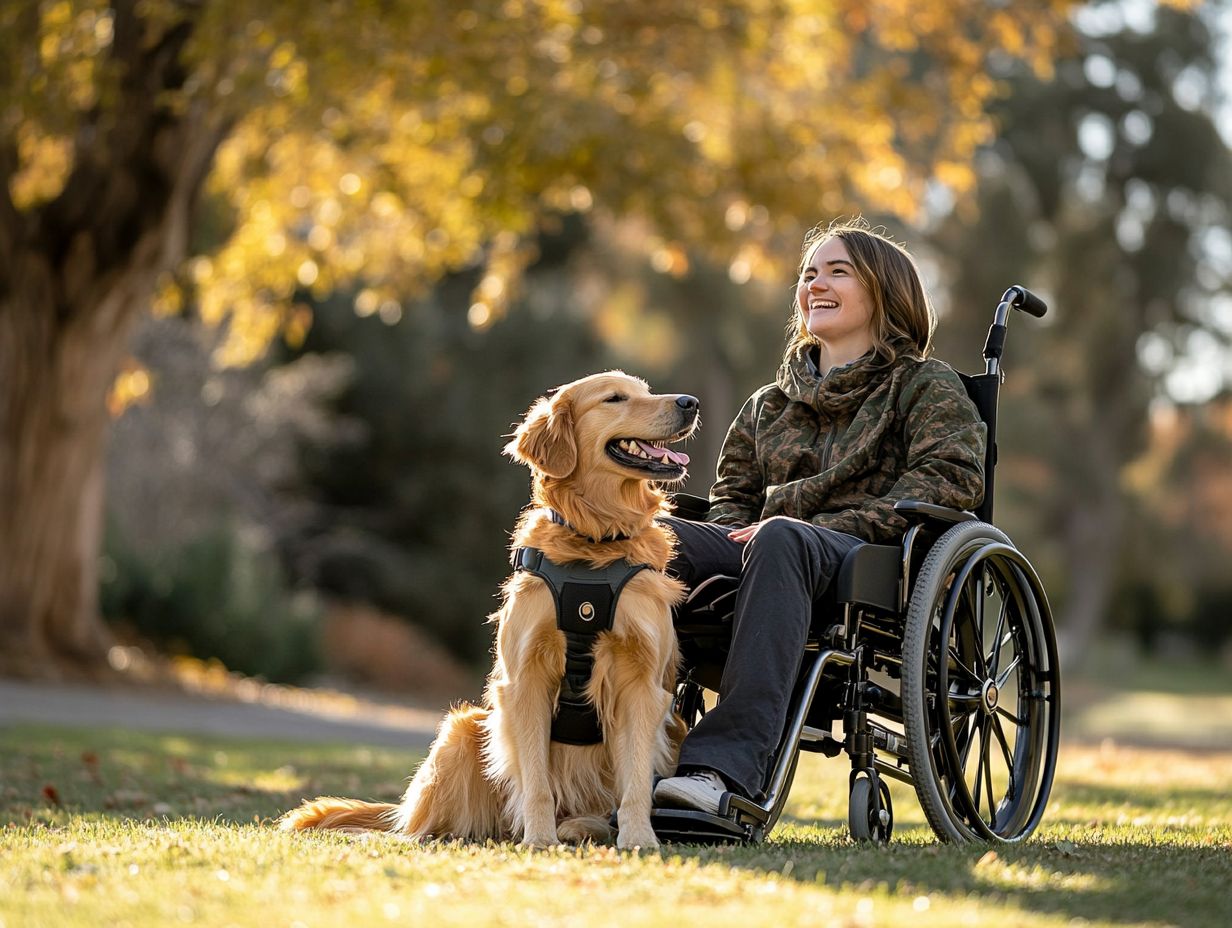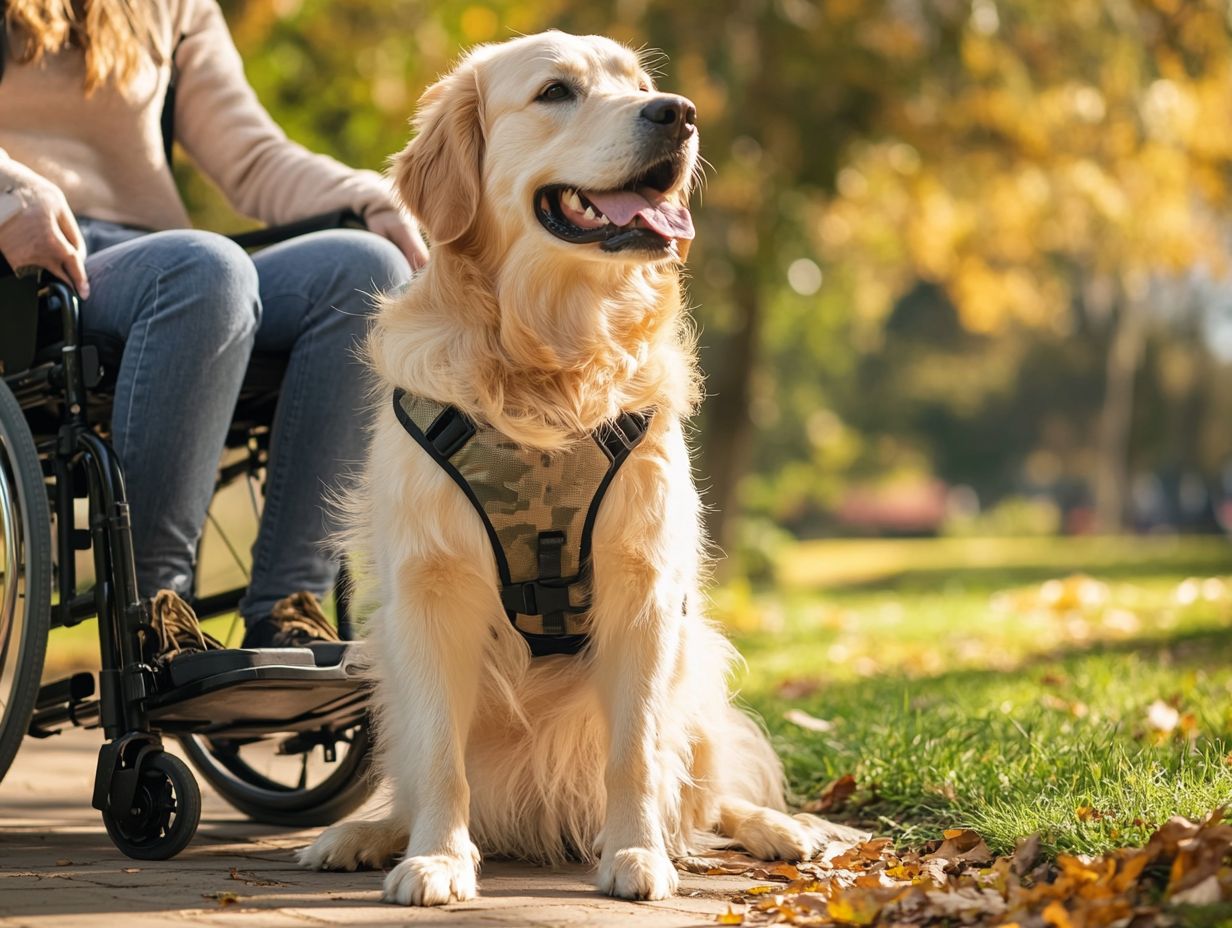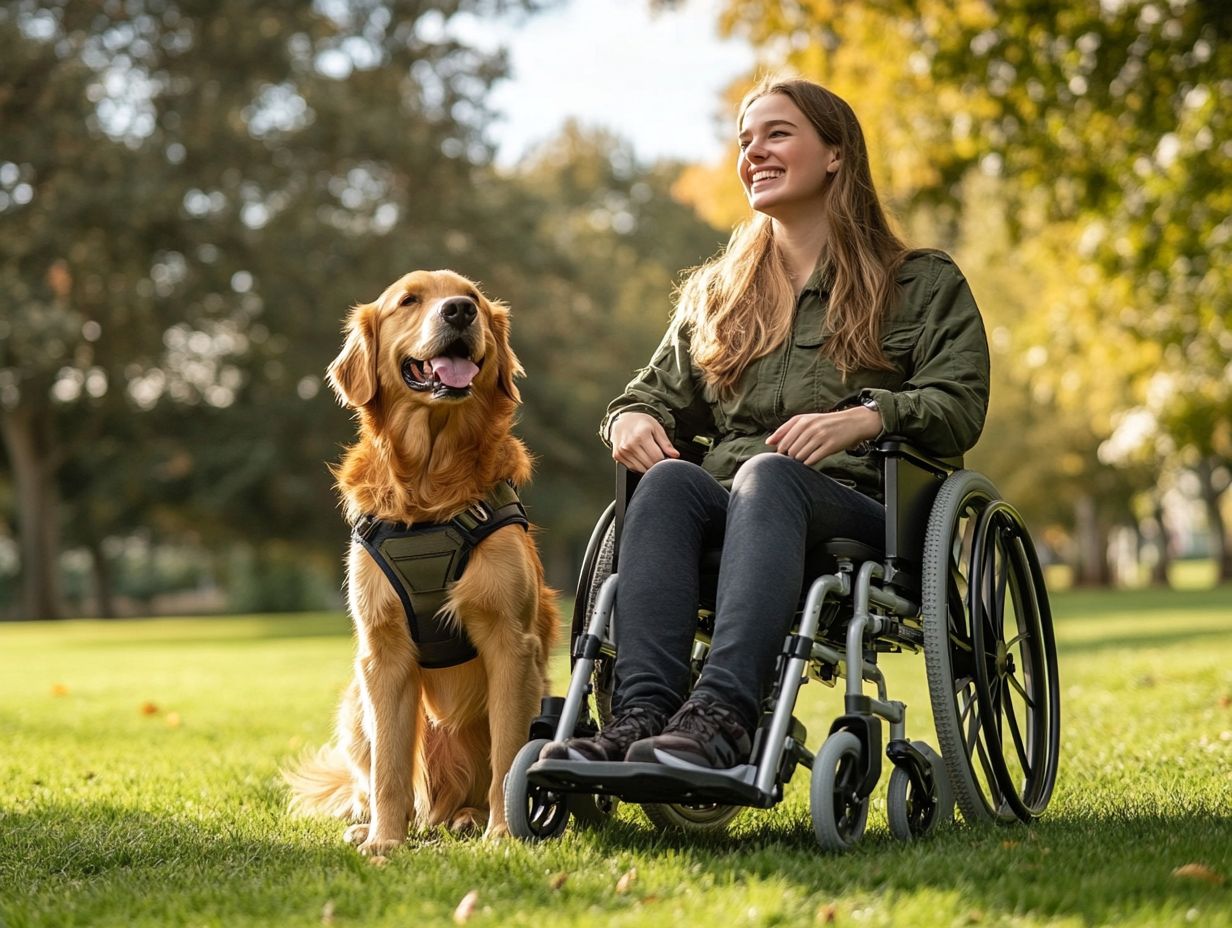Service dogs play a significant role in the lives of many individuals by providing essential services that extend beyond companionship. These dogs can assist with physical tasks, offer emotional support, and help their handlers lead a more fulfilling daily life.
This article will explore the various types of service dogs, their benefits, and the process of obtaining one. We will also discuss what it is like to live with a service dog and how these animals are reshaping society’s perceptions of disability and differences.
Understanding Service Dogs

Service dogs, also known as assistance animals, are specially trained to assist individuals with disabilities. They provide both physical support, such as mobility assistance, and emotional comfort through companionship.
Common breeds used as service dogs include Labrador Retrievers, Golden Retrievers, and German Shepherds. These dogs promote independence for their owners and help manage various disabilities, including anxiety disorders, post-traumatic stress disorder (PTSD), and autism.
What are Service Dogs?
Service dogs are assistance animals specifically trained to perform tasks for individuals with disabilities, enhancing their quality of life and emotional well-being. These animals are recognized under the Americans with Disabilities Act (ADA), which permits them to accompany their handlers in public places.
Types of service dogs include:
- Guide dogs for the blind or visually impaired,
- Hearing dogs for the deaf or hard of hearing,
- Mobility assistance dogs for those with physical challenges.
Trained through rigorous programs, these dogs learn to perform essential tasks such as retrieving items, alerting to sounds, and providing balance support, all of which directly improve their handlers’ ability to navigate daily life. Additionally, the companionship of service dogs can offer emotional support, helping to reduce anxiety and foster a sense of security.
Types of Service Dogs
There are several types of service dogs, each designed to assist individuals with different needs related to mobility, autism, PTSD, and other conditions. These remarkable animals can be categorized into three main groups: emotional support animals, therapy dogs, and true service dogs.
Emotional support animals (ESAs) are primarily trained to provide companionship and emotional support. They are often gentle breeds, such as Labrador Retrievers and Cavalier King Charles Spaniels. Therapy dogs (TDs), on the other hand, serve multiple individuals and are commonly found in medical facilities, schools, and disaster relief operations. Breeds with friendly dispositions, such as Golden Retrievers or Poodles, are typically used for this purpose.
True service dogs (SDs) are specifically trained to perform certain tasks related to the medical needs of an individual with a disability or condition. They assist individuals with mobility challenges, autism, PTSD, and various other conditions.
The Benefits of Service Dogs

The benefits of service dogs extend beyond companionship; they provide essential assistance and significantly enhance the overall quality of life for individuals with disabilities.
Physical Benefits
Service dogs play a crucial role in providing physical support to their handlers by assisting with daily living tasks, which promotes their independence. These tasks require specialized training and must be tailored to meet the unique needs of each handler.
Service dogs help individuals with mobility challenges navigate their environments more easily. They perform essential functions such as retrieving dropped items, opening doors, and assisting their handlers in maintaining balance and stability while walking.
Additionally, service dogs guide individuals through crowded spaces, significantly enhancing the overall quality of life for those they assist. By alleviating physical burdens, service dogs enable their handlers to participate more fully in daily activities and engage with their surroundings and others.
This support fosters independence, boosts self-esteem, and encourages social interaction.
Emotional Benefits
Service dogs provide significant emotional benefits, including companionship and support that enhance mental health and emotional well-being. These dogs are specifically trained to assist individuals suffering from anxiety, depression, and other emotional challenges.
They can soothe individuals during times of distress and help mitigate mood swings. Many people with service dogs report feeling less isolated and more secure.
The bond between humans and animals fosters routines and encourages exercise, contributing to emotional resilience and enabling individuals to address their challenges more effectively.
Social Benefits

Service dogs play a crucial role in promoting social interactions, enabling their handlers to engage with their communities and enhance their overall social skills. For many handlers, these highly trained dogs serve as tools for connection, breaking down social barriers that would otherwise be challenging to overcome.
For instance, a veteran with social anxiety may find it difficult to attend public events; however, with a service dog by their side, they often attract the attention of others who admire the dog. This interaction can boost the veteran’s confidence and encourage them to engage in social situations they might have previously avoided.
Similarly, individuals with autism often face difficulties in socializing, but the presence of a service dog can provide a calming effect, making interactions more manageable. In this way, service dogs facilitate connections between handlers and their communities.
Additionally, these dogs promote independence and a sense of belonging among the individuals they assist, further highlighting their vital role in the lives of their handlers.
How to Get a Service Dog
The eligibility criteria and application process for obtaining a service dog depend on the type of assistance the dog will provide and can vary from one organization to another.
Eligibility and Application Process
The requirements for obtaining a service dog depend on the individual’s specific needs and must align with the tasks for which the dog is trained. Generally, individuals must have a physical, sensory, psychiatric, or intellectual disability recognized under the Americans with Disabilities Act (ADA) to qualify for a service dog.
The application process typically requires documentation such as medical records and a letter from a licensed physician, psychologist, or psychiatrist. This letter should explain the need for a service animal and outline the tasks the dog will be trained to perform to assist the individual.
Understanding the laws regarding service animals is crucial, as these laws define the process for certifying service dogs and outline the rights of individuals with service dogs in public spaces. Adhering to these legal requirements ensures individuals receive the support they need to engage with their environment effectively.
Training and Certification

Training and certification are crucial elements in preparing a service dog to perform the tasks essential for assisting their handlers in daily life. The training process involves various interventions tailored to meet the specific needs of each dog and their future handler.
Positive reinforcement techniques, such as rewarding desirable behaviors with food or praise, are emphasized because they help strengthen the loving and trusting bond between the service dog and their handler. Nonprofit organizations play a vital role in providing these training interventions by offering access to necessary resources, manpower, and certified trainers.
Organizations like the Service Dog Certification Registry ensure that service dogs undergo thorough assessment and evaluation for certification, highlighting the significance of adhering to safety and service standards for these remarkable animals.
Life with a Service Dog
Adapting daily routines and embracing new responsibilities as a handler and companion to a service dog are both essential aspects of living with such an animal.
Daily Routines and Responsibilities
Handlers of service dogs follow specific daily routines that involve caring for their canine companions and ensuring they are well-trained to perform their assistance tasks. They typically start their day with a structured schedule that includes walks, feeding, and grooming.
Time is also set aside for reinforcement training, which helps the dog master tasks while strengthening the bond between the handler and the dog. Throughout the day, the handler navigates various environments, allowing the dog to demonstrate their skills, whether it involves guiding a person through a busy area or alerting them to specific sounds.
This partnership not only promotes independence for the handler but also provides emotional support and companionship, as the presence of a service dog can significantly enhance mental well-being and confidence.
Challenges and Coping Mechanisms
Handlers of service dogs encounter specific challenges that necessitate their own coping mechanisms to adapt to public access and societal perceptions.
One common challenge involves public access issues, where establishments may not fully understand the rights of service dog teams and could deny them entry. Additionally, there are frequent misunderstandings regarding the distinction between service dogs and emotional support dogs. As a result, handlers often find themselves explaining the purpose and extensive training behind their dogs.
To navigate these situations more effectively, handlers can benefit from carrying an ID card that outlines their rights and explains the assistance their service dog provides. Joining local support groups can also be invaluable, as these communities offer resources and strategies for effective self-advocacy and advocacy on behalf of their dogs.
The Impact of Service Dogs on Society
Service dogs positively impact society by altering perceptions and helping to break down the stigmas associated with disabilities and assistance animals.
Changing Perceptions and Breaking Stigmas
Service dogs play a vital role in changing societal perceptions and reducing the stigma surrounding disabilities and the need for assistance animals. Their presence in public spaces not only provides essential support but also serves as a reminder of the importance of awareness and understanding.
When people observe service dogs accompanying individuals with disabilities, it sparks conversations that can help normalize their presence in society. Community initiatives and advocacy efforts, such as awareness campaigns and educational programs, are crucial for raising awareness about the role these animals play in improving the quality of life for many.
These initiatives contribute to building a culture of inclusion by fostering empathy and respect, creating a society that recognizes both the significance of assistance dogs and the challenges faced by their handlers.
